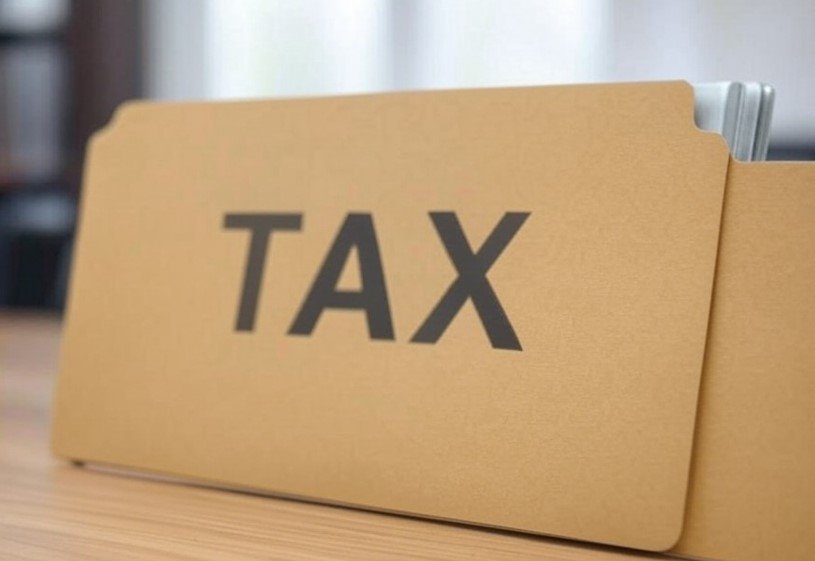New Income Tax Bill Set to Simplify Compliance, Introduces ‘Tax Year’ Concept
The Indian government is set to introduce a revamped Income Tax Bill 2025, which aims to simplify tax compliance by eliminating outdated legal jargon and incorporating a more structured and reader-friendly format. This new tax legislation, expected to be presented in Parliament on Thursday, seeks to replace the Income Tax Act, 1961, which has undergone numerous amendments over the past 60 years, making it bulky and complex.
With 536 sections, 23 chapters, and 16 schedules spread across 622 pages, the new bill is significantly more concise compared to the original 1961 legislation, which initially had 880 pages and 298 sections. The new bill does not introduce any additional taxes but focuses on enhancing clarity and accessibility for taxpayers.
Key Highlights of the New Income Tax Bill
Introduction of ‘Tax Year’ Concept
One of the most notable changes in the bill is the replacement of ‘previous year’ and ‘assessment year’ with ‘tax year’. This change eliminates confusion caused by the existing dual-year system, where income earned in one year is assessed for tax in the next. Under the revised framework, tax computation and payments will align directly with a single financial year, simplifying compliance for taxpayers.
Eliminating Redundant Provisions
The new bill omits outdated and redundant sections, such as those relating to Fringe Benefit Tax, which are no longer relevant. Additionally, legal jargon such as ‘notwithstanding’ has been replaced with ‘irrespective’, making the text easier to understand.
Enhanced Readability with Tables and Formulae
In an effort to make tax calculations simpler, the bill introduces tables and formulae for various provisions, including:
- TDS (Tax Deducted at Source)
- Presumptive taxation schemes
- Salary calculations
- Deductions for bad debts
This structured approach will help taxpayers and tax professionals quickly access relevant information without sifting through complex legal texts.
Taxpayer’s Charter and Rights
A Taxpayer’s Charter has been included in the bill, outlining the rights and obligations of taxpayers. This move aims to provide greater transparency and accountability in tax administration.
Fewer Explanations and Provisos
Unlike the previous Income Tax Act, which contained multiple provisos and explanations that often led to misinterpretation, the new bill has streamlined legal provisions to reduce ambiguities and potential litigation.
Approval Process and Parliamentary Scrutiny
Once introduced in Lok Sabha, the bill will be sent to the Parliamentary Standing Committee on Finance for further examination. The government aims to implement the new legislation from April 1, 2026, giving taxpayers ample time to adapt to the revised framework.
Rationale Behind the New Bill
According to the Statement of Objects and Reasons, the Income Tax Act of 1961 has become increasingly complicated due to decades of amendments. The growing complexity has raised compliance costs for taxpayers and created inefficiencies in tax administration.
The new bill aims to:
- Make tax laws easier to understand
- Reduce compliance burden
- Enhance efficiency in tax administration
Integration of Judicial Pronouncements
To provide better clarity, the new bill integrates judicial pronouncements from the past 60 years into its framework, offering clear guidance on tax matters that were previously subject to legal disputes.
Changes to TDS Structure
The bill consolidates all TDS-related sections into a single clause, making tax deduction procedures more straightforward. According to Sandeep Jhunjhunwala, M&A Tax Partner at Nangia Andersen LLP, this structural revision will require adjustments in tax reporting forms and utilities after the bill’s notification.
Public Consultation and Stakeholder Feedback
The Central Board of Direct Taxes (CBDT) played a pivotal role in drafting the new bill. The government sought public input across four key areas:
- Simplification of language
- Litigation reduction
- Easing compliance burdens
- Eliminating obsolete provisions
More than 6,500 suggestions were received from stakeholders, reflecting broad-based participation in shaping the new tax framework.
Comprehensive Review Process
To ensure a thorough review, the CBDT formed 22 specialized sub-committees to analyze different aspects of the existing tax laws and recommend necessary changes. The Finance Ministry had first announced the comprehensive review in July 2024, emphasizing the need for a modernized tax structure.
Looking Ahead
Once implemented, the Income Tax Bill 2025 is expected to reduce tax disputes, improve compliance rates, and create a more transparent tax system. By simplifying language and structuring tax provisions with user-friendly tables and formulas, the government aims to make tax filing a more efficient and hassle-free process for individuals and businesses alike.
Also see:
Indians Dominate H-1B Visas: 72% of Allocations Between Oct 2022 & Sept 2023
H-1B Visa Registration Opens on March 7; Fee Hike
Trudeau Calls Trump’s Canada Annexation Threat a “Real Concern”
Gautam Adani Donates Rs 10,000 Crore to Social Causes at Son’s Wedding
—————————————————————
It would mean the world to us if you follow us on Twitter, Instagram and Facebook




